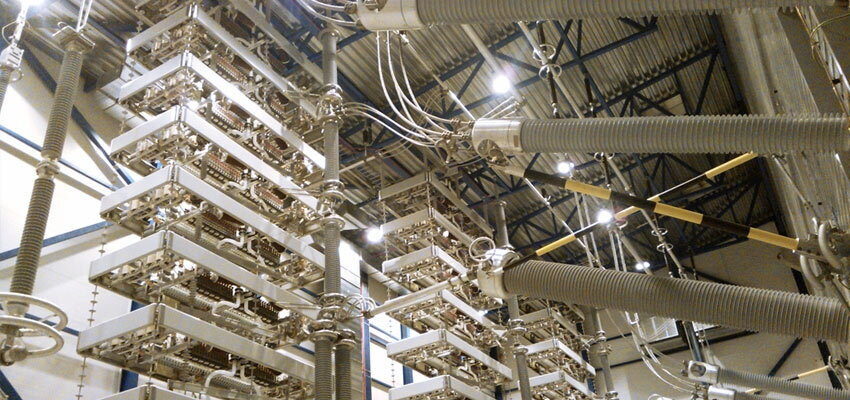
Transformers in HVDC Transmission
Why do we need power transmission by direct current? The transmission of bulk electricity in the last 120 years has revolutionised the way we live...
byMatti Stoor, Andre Canelhas

Why do we need power transmission by direct current?
The transmission of bulk electricity in the last 120 years has revolutionised the way we live and work by bringing the needed energy to move the industrial production machine wherever it was located.
From the early days of the “battle of the currents” between direct current (DC) and alternating current (AC), our industry has been fuelled by continuous innovation and challenged by ever increasing demands to reduce costs, be more efficient, reduce environmental impacts, promote social inclusion, and reduce emissions of pollutants that might cause climate change.
Despite the dominance of AC transmission throughout the 20th century, since the 1950s, high voltage direct current (HVDC), using line-commutated converters (LCC), has gradually re-established itself as a niche application. Initially there were no controlled high-voltage switches, which were capable of carrying out the task of converting AC into DC and back again. Hence early systems relied on cascading motor-generator schemes. In the middle of the 1950s, however, mercury-arc valves were developed which enabled the early “modern HVDC” schemes to be built without moving parts.

With the discovery and usage of semiconductor switching devices such as transistors, and particularly the thyristors in the 1960s, solid-state technology began to replace the older mercury-arc technology, bringing improved reliability and higher power ratings to HVDC.
HVDC interconnectors allowed the delivery of bulk power in ever-increasing voltage ratings with much reduced losses compared to AC systems. This made it possible to bring vast hydropower resources from far away dams to load centres, or interconnect regions for mutually beneficial energy exchange with further power systems stability improvements. Ultra-high-voltage DC transmission (UHVDC) nowadays is rated at 800 kV DC and rated currents in the range of 5.0 – 6.0 kA, thus achieving the transmission capacity of 8 GW with one single bipole (two conductors). R&D activity is already in course to extend the voltage further to 1,000 kV. There are several schemes in operation, under construction or being planned with basis on 800 kV UHVDC technology. It enables regional bulk-energy exchange and use of remote hydroelectricity.
In the first decades of the 21st century, the power industry challenges have again dramatically changed. Environmental concerns, the skyrocketing cost of land for new transmission lines and substations with severe restrictions for planning permits, as well as the price of energy itself are making energy managers and engineers look into HVDC transmission systems, and into how both AC and DC technologies may complement each other to result in higher system efficiency.
Traditionally HVDC would be used for a few typical cases: 1. for long distances, 2. when long sub-sea or underground cables are needed, or 3.when frequency conversion or asynchronous connection was necessary.
The first case is when the transmission distance is such that bulk power transmission becomes cheaper to be transferred with HVDC than using HVAC. The breakeven distance, depending on specific cases could be between 450 – 600 km. This happens because HVAC lines are more expensive than HVDC lines. One bipolar HVDC transmission system with two conductors, a positive and a negative one is equivalent to a double circuit AC transmission line for the same transmitted power. Hence six vs. two conductors for the length of the transmission motivate the adoption of DC. Furthermore, for the same transmission voltage level, the DC transmission losses are only a fraction of those in AC. On the other hand, the terminals, including converter equipment are more expensive with the HVDC compared with conventional substations. Thus, it pays off using DC for a certain minimum distance or longer.







